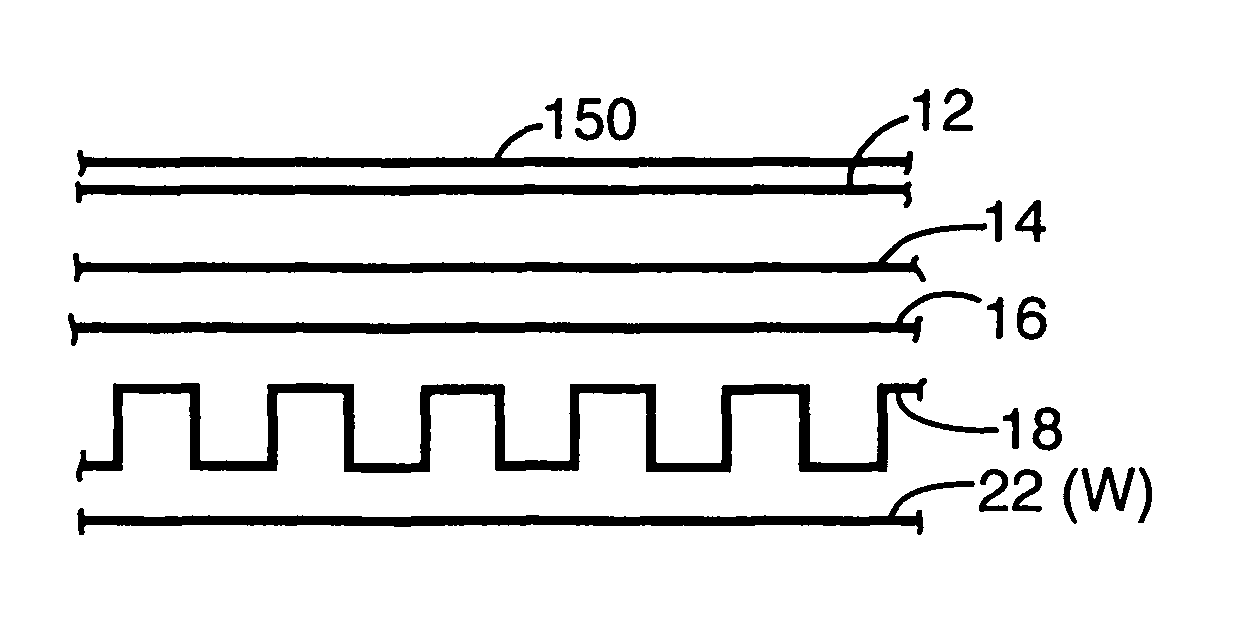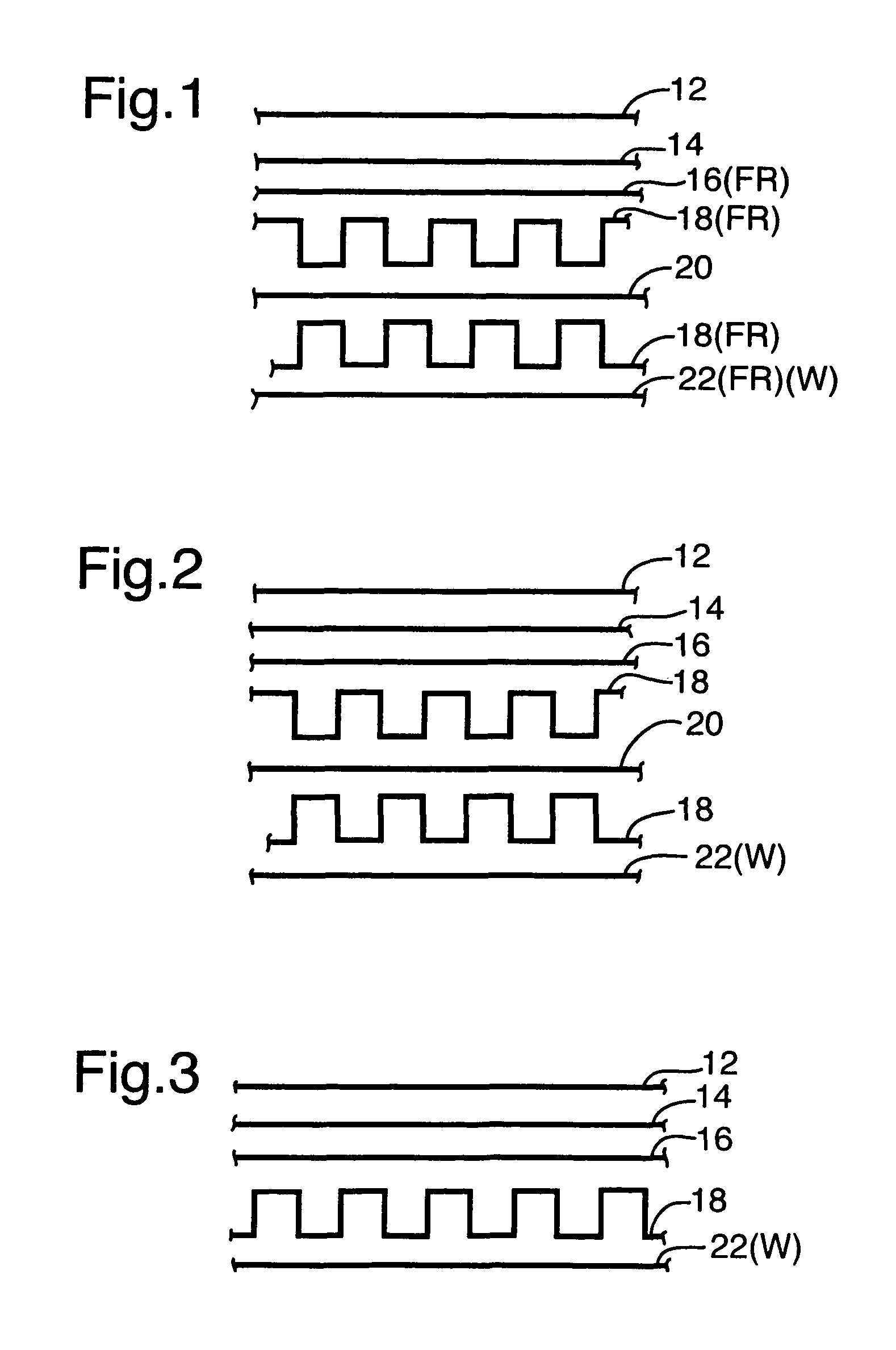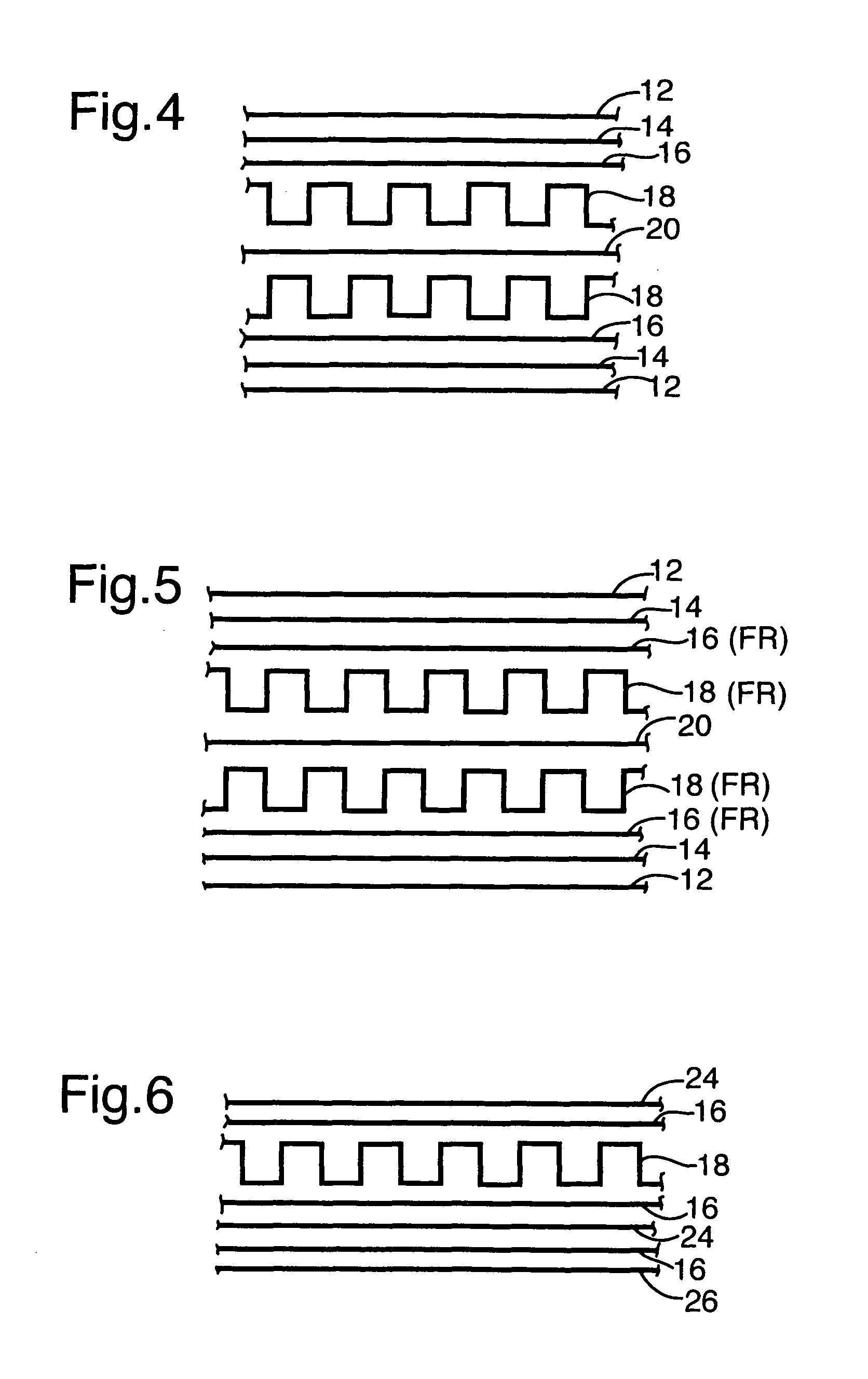Metallized polymeric film reflective insulation material
a reflective insulation and polymer technology, applied in the direction of heat-insulating pipes, bottling operations, heat-insulating, etc., can solve the problems of materials not meeting the standard, inability to initiate or propagate, inconvenience to the person, etc., and achieve the effect of improving fire-retardant properties
- Summary
- Abstract
- Description
- Claims
- Application Information
AI Technical Summary
Benefits of technology
Problems solved by technology
Method used
Image
Examples
examples 1 and 2
UNDERWENT FULL ROOM BURN TESTS
Example 1
[0114]This Example illustrates the testing of the bubble-pack assembly shown in FIG. 1—being commonly known as a metallized-double bubble-white poly (FR) in accordance with NFPA 286 Standard Methods of Fire Tests for Evaluating Contribution of Wall and Ceiling Interior Finish to Room Fire Growth. The test material was mounted on the LHS, rear, RHS walls to a height of the test room as well as the ceiling of the test room. The sample did not spread flames to the ceiling during the 40 kW exposure. The flames did not spread to the extremities of the walls during the 160 kW exposure. The sample did not exhibit flashover conditions during the test. NFPA 286 does not publish pass / fail criteria. This specimen did meet the criteria set forth in the 2003 IBC Section 803.2.1.
[0115]The test was performed by Intertek Testing Services NA, Inc., Elmendorf, Tex., 78112-984; U.S.A.
[0116]This method is used to evaluate the flammability characteristics of finish...
example 2
[0127]The test described under Example 1 was repeated but with a metallized double bubble / white poly not containing fire retardant as shown in FIG. 2.
[0128]The sample did not spread flames to ceiling during the 40 kW exposure. The flames did spread to the extremities of the walls during the 106 kW exposure. The sample did not exhibit flashover conditions during the test. NFPA 286 does not publish pass / fail criteria. However, this specimen did not meet the criteria set forth in the 2003 IBC Section 803.2.1.
[0129]Events during the test are described below:
[0130]
TIME(min:sec)OBSERVATION0:00Ignition of the burner at a level of 40 kW.0:14Specimen surface began to melt.0:20The edge of the specimen ignited.0:38The specimen began to melt 6-7 ft. above the burner / flamingdrops began to fall from the specimen.1:21Flame spread at 2 ft. horizontally at 4 ft. above the test burner.2:31Flame spread at 4 ft. horizontally at 4 ft. above the test burner.3:50The specimen on the ceiling began to fall.4...
example 3
[0138]The test specimen consisted of (3) 8 ft. long×24 in. wide×1.398 in. thick 17.50 lbs metallized / double bubble / white poly (No-FR) reflective insulation, assembly of FIG. 2 secured to 1.75 in. wide×1 in. thick, aluminum frames using ¾ in. long, self-drilling, hex head screws and washers. The nominal thickness of the reflective insulation was 5 / 16 in. thick. The white poly was facing the flames during the test. The specimen was self-supporting and was placed directly on the inner ledges of the tunnel.
[0139]The test results, computed on the basis of observed flame front advance and electronic smoke density measurements were as follows.
[0140]
Flame SpreadSmokeTest SpecimenIndexDeveloped IndexMineral Fiber Cement Board00Red Oak Flooring8575Test Specimen55
[0141]This metallized-double bubble-white poly having no fire-retardant assembly of FIG. 2 was most acceptable in this E84-05 test to permit use in Class A buildings.
[0142]During the test, the specimen was observed to behave in the fo...
PUM
| Property | Measurement | Unit |
|---|---|---|
| reflectance | aaaaa | aaaaa |
| diameters | aaaaa | aaaaa |
| diameters | aaaaa | aaaaa |
Abstract
Description
Claims
Application Information
 Login to View More
Login to View More - R&D
- Intellectual Property
- Life Sciences
- Materials
- Tech Scout
- Unparalleled Data Quality
- Higher Quality Content
- 60% Fewer Hallucinations
Browse by: Latest US Patents, China's latest patents, Technical Efficacy Thesaurus, Application Domain, Technology Topic, Popular Technical Reports.
© 2025 PatSnap. All rights reserved.Legal|Privacy policy|Modern Slavery Act Transparency Statement|Sitemap|About US| Contact US: help@patsnap.com



